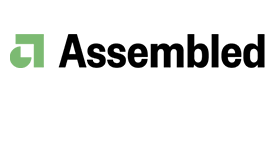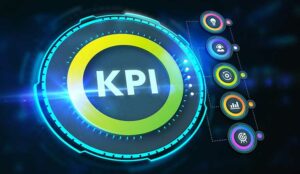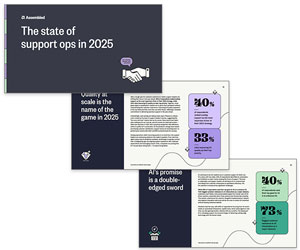Working as a call centre agent can be a tough gig: Even one poor customer service experience can cause a customer to turn away for good.
Conversely, great service can make a dramatic difference to a company’s bottom line. Salesforce discovered that 89% of consumers are more likely to make another purchase after a positive customer service experience.
Likewise, according to Bain, businesses can grow revenues between 4% and 8% above their market when prioritizing better customer service experiences.
With so much riding on the support experience, how do you ensure that your agents provide the dependable, knowledgeable, and timely service that customers expect?
It can be difficult to gauge how effective and efficient agents actually are, especially when you consider the number of calls a centre receives on a daily basis. That’s where call centre metrics come in.
In this article, we’ll define call centre metrics and offer nine KPIs that you can incorporate into your reporting to continue elevating the customer experience.
What Are Call Centre Metrics?
Call centre metrics indicate the productivity and performance of customer support teams. That’s why monitoring call centre metrics is a critical aspect of delivering high-quality service.
In order to evaluate the effectiveness of call centre metrics, managers use key performance indicators, or KPIs.
KPIs provide customer support managers with valuable insight into system issues, communication breakdowns, or staffing problems. The sooner they know about underlying issues, the faster they can be resolved.
That means the KPIs you select are critical. Consider the realities of your call centre and overall operational goals. Once you’ve nailed down the most important goals for your team, determining which KPIs to use should be a breeze.
Top Metrics to Measure Performance
Your performance metrics should be a direct reflection of your objectives: This way, you’re getting an accurate read on your call centre’s overall performance.
Of course, KPIs can vary by industry, but the below KPIs are standard for gauging performance and productivity.
1. Average Call Abandonment Rate
This KPI refers to the number of abandoned calls during any given amount of time.
While they wait for an available agent, callers may be on hold for a long time. Sometimes they decide they don’t want to wade through menu options, an emergency has come up during their wait, or they are simply unwilling to wait any longer. As such, abandoned calls never actually reach an agent, as callers have already moved on.
A high average call abandonment rate can be cause for concern. You can determine why inbound calls aren’t getting through to agents by paying close attention to your average call abandonment rate.
With that in mind, you can make the necessary adjustments to improve both your rate and the overall customer experience.
2. First Response Time
First response time measures the time between a customer notifying an agent of an issue to its response by the agent.
To track first response time, look at the percentage of calls where an agent closes the issue without transferring to another employee, escalating to their manager, or hanging up and calling back.
As you can imagine, the shorter your first response time, the better. Customers who call in to a centre are experiencing an issue’s repercussions and want an immediate solution.
Call centres with low first response times often have more satisfied customers who place higher trust in their support teams.
3. First Call Resolutions
First call resolutions can often be confused with first response time, but they are two very different KPIs. That’s because customers’ problems don’t always get solved during a call.
Unlike first response rate, first call resolutions measure how frequently a customer’s issue is resolved on their first call to support.
Higher first call resolution rates often lead to higher customer satisfaction rates. Customers don’t want to wait for a call back—they’d much rather have their issue resolved on the first try.
Of course, customers may need to hang up due to a time constraint, are unprepared to speak to support, or need to consult a colleague before answering an agent’s question.
Situations like these can affect your first call resolution rate, so keep an eye out for anomalies. That’s why it’s important to be analytic when reviewing KPIs, as they might not paint a holistic picture of a team’s productivity.
4. Percentage of Calls Blocked
This KPI measures the percentage of inbound calls that receive a busy tone, and are thus “blocked calls.” Agents might not be able answer a call because:
- There is a lack of available agents. When no call queue is set up, inbound calls hear your busy tone.
- Your call centre software can’t handle the volume. Some software simply isn’t built to support enterprise calling centres that receive thousands of incoming calls per day, which can send your customers straight to the dial tone.
- Your call centre is blocking spam calls. Unfortunately, call centres aren’t immune to spam callers. The best call centre software allows you to customize which types of calls get blocked. This way, your agents don’t waste time talking to spammers, and instead spend more time talking to your customers.
If you’re experiencing an unusually high percentage of calls blocked, it’s worthwhile to reassess your staffing patterns and take a deeper dive into the features of your call centre platform.
5. Average Time in Queue
Most call centres have at least a little wait time, and that’s okay—callers expect it. But when customers spend an inordinate amount of time stuck in a queue, they get frustrated and hang up.
The average time in queue KPI measures the length of time a customer waits to have their call picked up by an agent.
Queue times depend heavily on the volume of calls per hour, which can vary based on time of day, new product releases, or discount offers. This can make the average time in queue tricky to calculate.
That said, short queue times generally indicate that your agents are working efficiently and have the knowledge and bandwidth to handle the call volume.
If your average time in queue is consistently climbing, it’s probably time to take a look at your staffing patterns. You may need to hire more agents, or make changes to your queue workflow to streamline the process.
6. Average Handle Time
Average handle time measures the average amount of time an agent spends on a call. Average handle time should be inclusive of the time agents spend talking to customers, on hold, and on after-call work.
Shorter average handle times signify that agents address calls quickly. But that doesn’t mean you should try to get them to complete calls as fast as possible. You want customers to feel heard in addition to solving their problems.
So, take a look at your maximum and minimum handling times and figure out a midpoint to aim for. Encourage agents to take time to make customers’ concerns heard, but not so long that it disrupts queue management.
If your call centre’s average call time continues to grow, it may be a sign that agents need additional training to solve customer issues.
7. Average After-Call Work Time
As you know, call centre agents don’t exclusively answer phones. Agents must log accurate notes and process tickets at the end of every call.
Average after-call work time measures how long the average agent takes to close out their tickets after a call is finished.
If you have a high average after-call work time, consider eliminating unnecessary fields on tickets. Additionally, remind agents that customers don’t have to stay on the line after they’ve informed the agent of an issue.
Of course, agents still have to resolve the issue once the customer hangs up, but the faster they can wrap up a ticket, the less time they’ll be unavailable for incoming calls.
It’s a delicate balance: Make sure you’re not encouraging your team to rush. Doing so can cause mistakes, which, in turn, lead to a poor customer experience.
8. Service Level
Service level is a measure of real-time agent productivity—the percentage of calls answered in a certain amount of time. If your service level is high, your agents pick up the phone almost immediately, and your customers feel like they get a more attentive experience.
A low service level could mean that your business doesn’t have the resources to fulfill customer needs, or your call centre software doesn’t distribute calls effectively.
To strengthen your service level, you’ll need to explore new customer service tools or hire additional employees.
9. Occupancy Rates
Occupancy rate shows how long agents are occupied, meaning currently on a call or finishing up work related to that call. Low occupancy rates imply that agents aren’t being given enough work. The root cause could be an issue with your software’s queue routing.
You may even be overstaffed. If you find your overall occupancy rates are routinely low, try pulling occupancy rates at different times of the day. Consider reassessing staffing patterns and lowering the number of agents during particular shifts.
Optimize Your Call Centre
Evaluating call centre performance can be difficult. There are so many variables, from the difficulty of a customer’s problem, to the agents’ level of experience, to your call centre software.
Call centre metrics give you a good read on your team’s overall performance and surface challenges so you can clear them up quickly. But keeping track of call centre KPIs is easier said than done.
This blog post has been re-published by kind permission of Assembled – View the Original Article
For more information about Assembled - visit the Assembled Website
Call Centre Helper is not responsible for the content of these guest blog posts. The opinions expressed in this article are those of the author, and do not necessarily reflect those of Call Centre Helper.
Author: Assembled
Published On: 3rd Apr 2023
Read more about - Guest Blogs, Assembled






 Assembled is a Support Operations platform that helps companies maintain exceptional customer experiences, no matter what lies ahead. Leading brands use Assembled's workforce and vendor management capabilities to make optimal staffing decisions, gain visibility into performance and productivity, and unlock new ways to serve evolving customer needs.
Assembled is a Support Operations platform that helps companies maintain exceptional customer experiences, no matter what lies ahead. Leading brands use Assembled's workforce and vendor management capabilities to make optimal staffing decisions, gain visibility into performance and productivity, and unlock new ways to serve evolving customer needs. 












